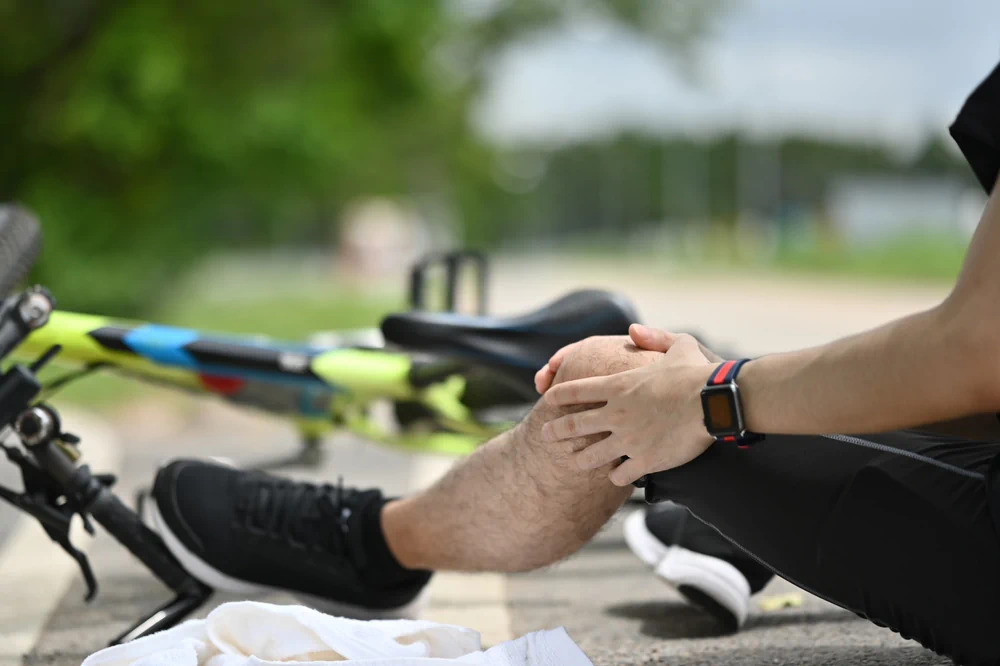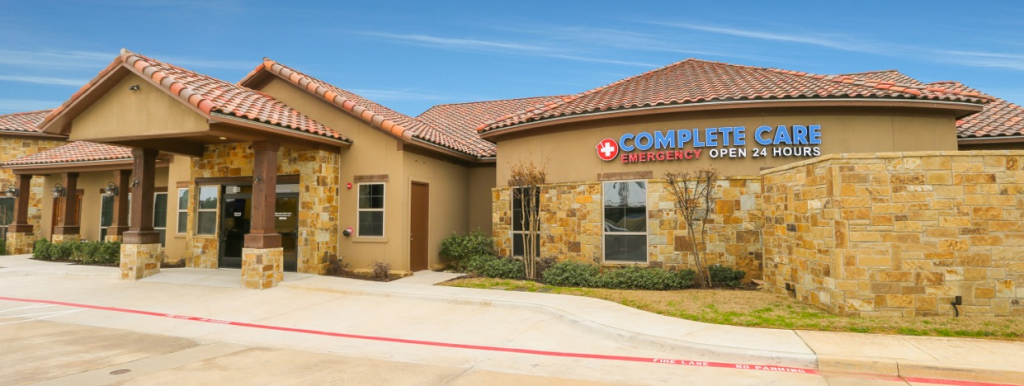When to Go to the ER For Common Fall Injuries
When to Go to the ER
•
Nov 14, 2024
Reviewed by:

As the leaves change color and the air turns crisp, the colder seasons bring their own set of joys — and risks. A sudden slip on wet leaves or a tumble while hanging decorations can leave you wondering: When should I go to the hospital after a fall? Is this ER-worthy, or can I manage at home?
While many fall injuries can be treated at home, some require immediate medical attention. Consider heading to the ER if you experience:
- Loss of consciousness, even briefly
- Severe head pain or confusion after a fall
- Visible bone deformities or suspected fractures
- Uncontrolled bleeding
- Difficulty breathing or chest pain
- Sudden, severe back or neck pain
- Inability to bear weight on a limb
In this article, we’ll explore common fall injuries and provide clear guidance on when a trip to the emergency room is necessary, so that you can make informed decisions about your health and safety and get back to your life. Whether you’re dealing with everyday accidents or need exercise safety tips, Complete Care can handle it all.
When should you go to the hospital after a bad fall?
1. Loss of consciousness
Losing consciousness after a fall, even for just a few seconds, is a red flag that demands immediate medical attention. The impact of the fall can cause your brain to move within your skull, potentially leading to disruption of normal brain activity, temporary loss of blood flow to certain areas of the brain, or stretching and damaging of brain cells.
Losing consciousness can indicate a serious head injury, potentially including:
- Concussion: a mild traumatic brain injury that can temporarily affect brain function
- Contusion: bruising of the brain tissue
- Intracranial hematoma: bleeding between the brain and the skull
At the ER, doctors can perform necessary tests like CT scans to assess the extent of the injury and provide appropriate treatment. Immediate concerns include potential for further internal bleeding, swelling of the brain (cerebral edema), and risk of long-term cognitive effects if left untreated.
2. Severe head pain or confusion after a fall
Experiencing intense headaches or confusion following a fall can be signs of a serious head injury. These symptoms may indicate a concussion or more severe brain trauma.
If you’re wondering when to see a doctor after a fall, persistent or worsening head pain and any level of confusion are clear indicators to seek immediate medical attention. At the emergency room, healthcare professionals can assess your condition and determine if you need further tests or observation.
Early intervention can also help prevent more severe complications, such as internal bleeding or traumatic brain injury, which might not be immediately apparent after the fall.
3. Visible bone deformities or suspected fractures
Falls can result in broken bones, particularly in the wrists, arms, ankles, and hips. You may have a fracture if you notice:
- Visible deformity
- Intense pain
- Swelling
- Inability to move a limb normally
This is especially common in injuries from falling down stairs. Seeking immediate medical evaluation is key to ensuring that any bone fractures or dislocations are correctly aligned, reducing the risk of long-term complications.
X-rays and other imaging tests at the ER not only confirm the extent of the injury but also provide doctors with the information needed to recommend the most effective treatment plan, whether it involves immobilization, surgery, or further specialist care.
4. Uncontrolled bleeding
Severe cuts or lacerations from a fall that won’t stop bleeding with direct pressure require immediate medical attention. This is one of the key symptoms to look for after a fall. Uncontrolled bleeding can lead to significant blood loss and may indicate damage to major blood vessels.
If you experience uncontrolled bleeding after a fall, you should:
- Apply direct pressure to the wound
- Elevate the injured area if possible
- Seek emergency care immediately
The doctors at the emergency room can properly clean, assess, and close the wound to prevent infection and further complications. They can also determine if there’s any underlying damage to muscles, tendons, or blood vessels that may require specialized treatment.
5. Difficulty breathing or chest pain
If you experience shortness of breath or chest pain after a fall, especially if you fell on your side and it hurts, seek emergency care immediately. These symptoms could indicate:
- Rib fractures
- Lung injuries (such as a punctured lung)
- Heart-related issues triggered by the fall
Getting medical evaluation quickly is essential to rule out potentially life-threatening conditions. ER doctors can perform necessary tests, such as chest X-rays or CT scans, to assess the extent of any internal injuries and provide appropriate treatment. This may include pain management, respiratory support, or even surgical intervention in severe cases.
Complete Care’s full digital services allow us to perform tests promptly and receive results within minutes for quicker care!
6. Sudden, severe back or neck pain
Intense pain in your back or neck following a fall could signal spinal cord injury or vertebral fractures. This is a common concern in slip and fall injury cases. Any numbness, tingling, or weakness in your extremities accompanying the pain requires urgent medical attention.
ER doctors will:
- Perform a thorough neurological examination
- Order imaging studies like X-rays, CT scans, or MRIs
- Immobilize the spine if necessary to prevent further damage
Early diagnosis and treatment of spinal injuries can significantly improve outcomes and prevent long-term complications such as chronic pain or paralysis.
7. Inability to bear weight on a limb
If you can’t put weight on an arm or leg after a fall, you may have a fracture or severe sprain. This is often seen with common hand injuries or lower limb injuries. While not all such injuries are emergencies, the inability to use a limb normally warrants prompt medical evaluation. This applies to various scenarios, from work-related injuries to Christmas injuries while decorating.
Signs that indicate you should seek immediate care include:
- Severe pain
- Significant swelling
- Visible deformity
- Complete loss of function in the affected limb
Emergency healthcare providers can perform the necessary imaging to determine the extent of the injury and recommend appropriate treatment, which may range from immobilization and pain management to surgical intervention for more severe cases.
Know where to go for fall injuries: Visit a Complete Care freestanding ER today.
When you experience fall injuries, every minute counts. At Complete Care freestanding emergency rooms, we understand this urgency and provide immediate, high-quality care without the typical long waits associated with traditional hospital ERs. Our facilities are equipped with state-of-the-art diagnostic tools, including CT scanners and X-ray machines, allowing for quick and accurate assessments of your injuries.
Our team of board-certified emergency physicians and experienced nursing staff are available 24/7 to treat a wide range of fall-related injuries. From minor sprains and cuts to more severe conditions like fractures, concussions, or internal injuries, we have the expertise to handle it all.
Complete Care combines the comprehensive capabilities of a hospital emergency room with the accessibility of a neighborhood clinic in Austin, Corpus Christi, Dallas/Fort Worth, East Texas, Lubbock, San Antonio, and Colorado Springs. Trust us to provide expert, timely care when you need it most this season.
More Helpful Articles by Complete Care:
- Mono Throat vs. Strep Throat: What’s the Difference?
- What is a Viral URI?
- How to Find the Nearest Emergency Room
- Extreme Dehydration Symptoms
- When to Go to the ER: A Comprehensive Guide
